Related Products
For Professionals
- Amplification
- Assessment of Student Skills, Challenges, Needs
- Early Childhood: Infants, Toddlers, Preschool
- Hearing Loss – Identification, Impact and Next Steps
- IDEA Law Summary Information
- Language and Speech Development Issues
- Legal Issues in Serving Children with Hearing Loss
- Listening (Auditory Skills) Development
- Planning to Meet Student Needs
- Self-Advocacy Skills for Students with Hearing Loss
- Self-Concept: How the Child with Hearing Loss Sees Himself
- Social Skills
- Speech Perception & Learning
Related Teacher Tools Takeout Items
Auditory Skills – Awareness
AUDITORY SKILLS FOR SCHOOL SUCCESS
Awareness:
Detection – Localization – Auditory Attention
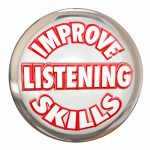 Speech perception is the set of listening skills that are essential for communicating by spoken language. Speech perception skills can be described in four categories: awareness, discrimination, identification and comprehension. Each skill set is described on web pages in the Listening (Auditory Skills) Development section.
Speech perception is the set of listening skills that are essential for communicating by spoken language. Speech perception skills can be described in four categories: awareness, discrimination, identification and comprehension. Each skill set is described on web pages in the Listening (Auditory Skills) Development section.
These listening skills do not develop sequentially from one category to the next. Rather, a child might simultaneously be developing skills in two, three, or even all four categories, but at varying levels of complexity.
Speech perception training also requires attention to the complexity of the listening task, or the amount of acoustic information in the message. Generally, levels of complexity are described as the sound/phoneme level, word level, phrase/sentence level, and discourse/connected speech.
Auditory awareness can be described as a combination of three subsets of skills: detection, localization and auditory attention.
DETECTION
Detection is the most basic of listening tasks, as it requires the listener to determine the presence or absence of sound, or of a particular sound. For children who have typical auditory development, detection of sound begins in the third trimester of pregnancy and continues to develop during the first year of life. (Werner)
During a hearing screening, the technician plays a tone and the client responds by raising a hand. This is a simple detection task. During a more extensive evaluation, the volume of the tone could be decreased to the point at which the client no longer hears it. That is the point at which detection ceases. This point is called the threshold. When we read an audiogram, the thresholds for each frequency, or pitch, of sound are marked, often with Xs and Os, to designate hearing levels at the left (X) and right (O).
DETECTION AND STUDENTS WITH HEARING LOSS IN THE SCHOOL SETTING
Professionals working with students who have a hearing loss should not forget that the student may not be hearing a particular sound, due to device failure, hearing fluctuation or a variety of other reasons. A change in ability to detect or identify a sound can often be discovered quickly during a Daily Listening Check. LINK
Assessment of Detection
 A student’s audiologist should ensure that the device settings allow the student access to the full range of speech sounds accessible to the student; however, these settings can become less effective over time.
A student’s audiologist should ensure that the device settings allow the student access to the full range of speech sounds accessible to the student; however, these settings can become less effective over time.
Professionals working with a student can determine if the student can indeed hear all or most of the phonemes. Erber describes a subset of the Glendonald Auditory Screening Procedure! (GASP!) to evaluate the student’s ability to detect speech sounds. Download the Modified Glendonald Auditory Screening Procedure (GASP). The GASP presents ten vowel sounds and 12 consonant sounds, representing the full spectrum of the 44 phonemes of English. These sounds and procedures appear in the downloadable test above. Erber says the steps can be completed in 10 minutes. The remaining 22 phonemes could presumably be added, increasing the time needed to 20 minutes, for a complete assessment of phoneme detection.
Developing Phoneme Detection Skills
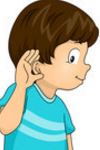
A new device recipient may need practice with detecting the full range of speech sounds. This training may or may not be provided by the student’s audiologist. First, determine whether the student can distinguish between speech and non-speech sounds. Instruct the student to listen raise a hand when your voice is heard – not other sounds, just your voice. Let the student know immediately whether the response is correct.
1. Stand behind the student and wad up a piece of paper. Wait for a response.
2. Say, “bu-bu-bu”.
3. Knock 3 times on a table, door or wall.
4. Rub the wad of paper across the table.
5. Say, “sssshhhhhh”.
6. If the student is having difficulty responding correctly, move to a place where you can be seen. Repeat the steps several times so the student can learn the differences between the sounds. If the student continues to struggle, the family and audiologist should be notified.
The CID Speech Perception Instruction Curriculum and Evaluation (CID SPICE) Manual offers other guidelines to help a student build speech detection skills.
Start with extended sounds like repeated syllables (e.g. bu-bu-bu) or a continuous vowel (e.g., oooooooo, eeeeeeee).
Once you find a sound that is detectable, practice with that sound until it is detected with at least 80% accuracy, then add other sounds.
When moving to detecting words, which may be briefer than the extended sounds referred to above, consider choosing the student’s name as the first word to practice detecting.
A student with a profound high frequency hearing loss may not have the ability to detect quieter unvoiced sounds (e.g. /s/, /f/, /th/).
A more challenging task is to identify when a voice starts and ends. This can be practiced with the repeated syllables or a vowel. The student should signal when the voice begins to be heard and when it stops.
When the student can identify the beginning and ending of a continuous voice, move on to signaling the beginning and ending of a spoken phrase or sentence.
Older students can indicate that a sound was heard, by raising a hand or giving a verbal response. Younger students may respond better to a fun activity such as stacking blocks or rings or pulling popbeads when a sound is heard. To signal the beginning and ending of voicing, drawing a line, coloring a picture, or turning a light on and off or moving a puppet’s mouth while the adult is voicing can be fun.
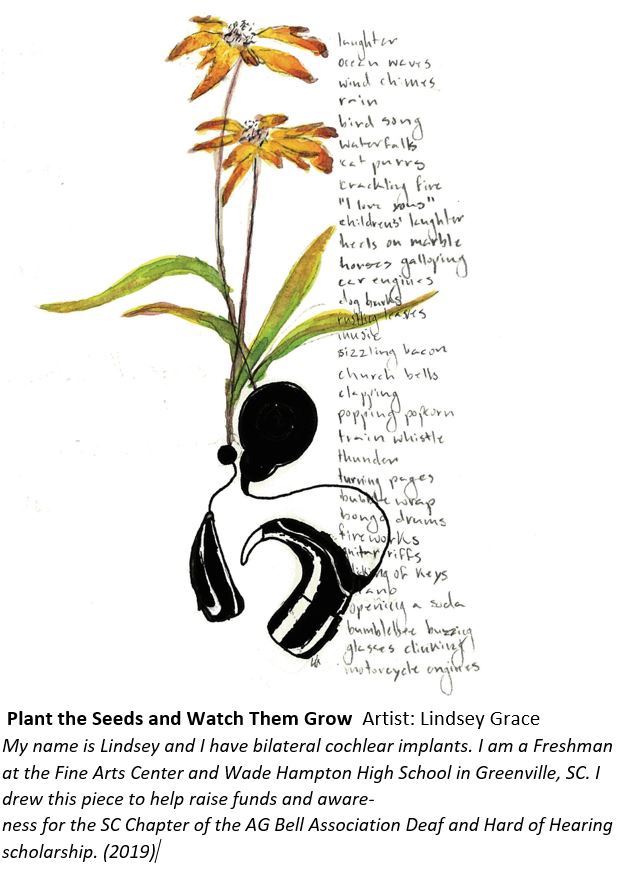
Recognizing Detection Errors and Improving Detection Skills
The context in which spoken language occurs contributes greatly to understanding the message. A student who doesn’t hear the plural /s/ in a sentence that begins with, “Scientists investigated ….” will still probably understand the key content of the message. Difficulty hearing a specific sound has few serious consequences in school. Some exceptions are missing a final consonant on a spelling test (i.e. writing track for tract) or misunderstanding a name (Maria vs. Maryann). Detection errors can also lead to speech errors such as omitting /s/, /f/, /th/, /t/ and other soft sounds in a student’s speech production.
If a detection error is suspected, asking the student to repeat what she heard can be a quick check. If the student omits sound(s) in her response, cue her to the error by saying, “Oh, you missed a sound. Listen again.” Then repeat the word, sentence or phrase naturally. If she still can’t repeat correctly, then tell her the exact error, repeat the phrase and have her produce the word correctly. In this way, the student can become more aware of the sounds that are difficult for her to hear and may improve her speech perception and production abilities.
More Resources
Free PD webinar from CID – Central Institute for the Deaf
LOCALIZATION
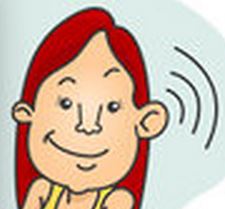 Localization, the ability to locate the source of a sound, begins to develop within the first seven months of life and continues to improve as the child has more experience with hearing and listening. When localizing a sound, the brain compares the relative loudness of the sound at each ear. Sounds that originate from the right or left side of a person are easier to locate than sounds originating from in front or behind. Individuals with unilateral or imbalanced hearing loss (including imbalanced hearing levels with hearing devices) may have more difficulty locating the source of a sound.
Localization, the ability to locate the source of a sound, begins to develop within the first seven months of life and continues to improve as the child has more experience with hearing and listening. When localizing a sound, the brain compares the relative loudness of the sound at each ear. Sounds that originate from the right or left side of a person are easier to locate than sounds originating from in front or behind. Individuals with unilateral or imbalanced hearing loss (including imbalanced hearing levels with hearing devices) may have more difficulty locating the source of a sound.
LOCALIZATION AND STUDENTS WITH HEARING LOSS
Localization is important during class discussions and conversations with multiple people. Difficulty localizing can have academic consequences, as time and effort spent locating the talker reduces attention to the message and delays the support received from visual cues such as speechreading. Localization of environmental sounds can also be a safety issue in sports, traffic and other environments.
Assessment of Localization Skills
A discussion with the student with hearing loss can reveal the student’s perceptions of challenges with class discussions. Use open-ended questions, not yes/no questions. For example: Tell me about understanding class discussions. What is helpful? What is the hardest? When are you most successful?
Observe the student during small group or whole class discussions. Note the number of people in the group.
a) Make a hash mark each time a different person begins talking.
b) Make a checkmark each time the student tries to find the talker.
c) Circle the checkmark if he was successful in finding the talker.
d) Put an x through the checkmark if he if he gave up before the talker finished.
e) Note any students who try to help the student with hearing loss follow the discussion
Turn your observations into data by calculating percentages.
— Rate of Attempts to Locate the Talker = c ÷ b (“c” is number of checkmarks)
— Rate of Successfully Locating the Talker = d ÷ b (“d” is number of circled checkmarks)
— Rate of Abandoned Attempts = e ÷ b (“e” is the number of checkmarks with an x)
Observe the teacher during class discussions.
— Note any strategies the teacher uses to help students know who is speaking (see suggestions in the next paragraph)?
— Note any relevant rules posted in the room to guide class discussions. Note how many times those rules are followed or broken. Note number of times the students were reminded to follow the rules.
Addressing Localization Challenges
There is evidence that training can improve localization skills in adults with typical hearing, but there are few studies of localization training in individuals with hearing loss. Explain to students with hearing loss that turning the head can help localize a sound. Use the alarm on a phone to demonstrate and practice. Make sure the alarm tone and volume are audible to the student.
There are some simple steps that the classroom teacher can take that will benefit students during class discussions.
 — When calling on a student to speak, use the student’s name and gesture toward them (with a nod or sweep of the hand).
— When calling on a student to speak, use the student’s name and gesture toward them (with a nod or sweep of the hand).
— Establish the expectation that anyone who is speaking to the class will stand and use an appropriate volume.
— Use a pass-around microphone or the teacher’s FM microphone for anyone speaking to the class.
— Repeat or summarize each question or comment.
Using information and data from your observation, make a plan with the student, or with the student and teacher together to improve the student’s ability to follow class discussions.
More Resources for Localization
Curricula: Central Institute for the Deaf – CID SPICE for Life
AUDITORY ATTENTION
 Auditory Attention is often discussed as a figure-ground task – the ability to attend to a spoken message in the presence of competing background noise. The Where’s Waldo challenges are a visual figure-ground task. Focusing on a specific voice in a sea of other human voices can be compared to searching for Waldo in a scene of similarly clad people.
Auditory Attention is often discussed as a figure-ground task – the ability to attend to a spoken message in the presence of competing background noise. The Where’s Waldo challenges are a visual figure-ground task. Focusing on a specific voice in a sea of other human voices can be compared to searching for Waldo in a scene of similarly clad people.
When an individual is in a room full of people chatting in small groups, she filters out the conversations around her in order to focus on her own small group. The irrelevant speech become a low rumble as if it were distant thunder. Although this focused listening seems to happen without effort, it does require cognitive resources and listening effort to attend to a single stream of speech in a sea of spoken language.
Auditory Attention and Students with Hearing Loss
Students with reduced hearing levels are not the only ones who can struggle with auditory attention. Students with attention deficit disorder, auditory processing disorder, autism spectrum disorder and others may find it difficult to attend to a spoken message in the presence of background noise. Ability to attend can be affected by multiple factors, such as amount of sleep, nutrition, bodily comfort, emotional state, motivation, and interest in the topic, to name a few.
Gomes, et al describe four types of auditory attention: arousal, orientation, selective attention and sustained attention. Each of these are important for academic success. When students are working in small groups and the teacher begins talking to the whole class, each student needs to rouse to the teacher’s voice (arousal), shift attention from the conversation in the small group and focus on what the teacher is saying (orientation). Often, other students or groups of students do not cease talking in order to listen to the teacher. When this happens, the amount of background noise adds to the difficulty of focusing on the teacher’s message (selective attention). In addition to being alerted by the teacher’s voice and shifting attention, the student needs to be able to sustain attention for the duration of the teacher’s discourse or group conversation.
Assessing Auditory Attention
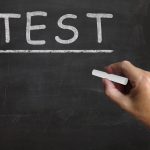
Auditory attention is just one way of attending to an activity – but it may be the most important part of attention at school. Consider the amount of information shared in the classroom by students and teachers using spoken language. Any student with poor auditory attention will be at a great disadvantage.
While there are formal tests of auditory attention, such as the Test of Variable Attention, observation may be the most convenient and informative assessment tool for a teacher. The Children’s Auditory Performance Scale can provide information about the student’s attention in a variety of listening conditions.
Another method is Momentary Time Sampling. Before beginning the observation, define the listening behavior you are measuring. Auditory attention is not a visible behavior. A student who is doodling may be listening carefully. A student rummaging through his desk is probably not. Set a timer to vibrate every 10 seconds. When the timer vibrates, record whether the student was attending to the activity at that moment. It can be helpful to also collect data on a classmate with typical hearing and compare the two data sets.
The Screening Instrument for Targeting Educational Risk (SIFTER) for preschool, elementary and middle through high school has three items that compare attention of a student with hearing loss to that of his or her classmates. The Children’s Auditory Performance Scale (CHAPS) for children 7 years and older has 8 items to compare auditory attention to that of other children of similar age and background in a variety of circumstances.
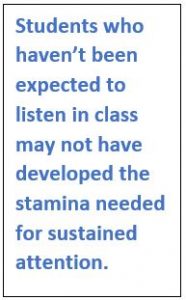 Developing Auditory Attention
Developing Auditory Attention
Attention requires ongoing cognitive effort. Almost any error a student makes could be due to wavering attention. A mistake in the Ling Sound Check, an incorrect response in group discussion, a misheard spelling word. Whether the auditory task required detection, identification, discrimination or comprehension, a momentary lack of attention can have an impact on the student’s success with the task.
According to the International Listening Association, 45% of a student’s day is spent listening, and students are expected to acquire 85% of their knowledge through listening.
Students who haven’t been expected to listen in class (“She’s deaf, after all!”) may not have developed the stamina needed for sustained attention. A student may not recognize when their attention drifts from the teacher or even be aware that it’s possible for them to notice this. They may not know that simply hearing the teacher isn’t going to lead to learning.
Many students feel helpless when told they need to “pay attention”. It can be helpful to explain a few principles of hearing and attention.
— Listening is different than hearing. Listening requires effort. Listening = hearing + attention. Younger students may understand the statement that “Listening uses your eyes, ears and”
— Each person has a degree of control over their attention, and exercising the attention ‘muscle’ can improve our sustained attention.
— No one can pay attention 100% of the time. Everyone’s attention drifts for a moment or even longer. Teachers may benefit from accepting this fact too! If a student is allowed to admit, without negative consequences, that they weren’t paying attention, the student might do so and ask for a repetition of what was said. This would increase engagement in the lesson. Self-awareness of one’s own attention might also increase.
— For students still developing spoken language, they may need to learn how to ask for something to be repeated. This is also common in adults with hearing loss. Provide a variety of choices, such as, “I’m sorry, I missed that. Could you repeat it please?” “Could you repeat that, please?” or “Please say that again.”
Auditory Attention Resources:
Intervention Central has suggestions, activities and tools for building attention in the classroom
On Task Self- Monitoring Sheet
References
Erber, N. 1982 Auditory Training. A.G. Bell Association for the Deaf. Washington D.C.
Gomes, A. Christodoulou, C. Mollholm,. Cowan, N. The Development of Auditory Attention in Children. Frontiers in Bioscience. 2000.5:108-120.
Werner, LA. 2007 Issues in Human Auditory Development. Journal of Communication Disorders. 2007;40(4): 275-283.
CURRICULA
CAST – Contrasts for Auditory and Speech Training
SPICE – Speech Perception Instructional Curriculum & Evaluation
Posted August 2019. This information was authored by Julia West, teacher of the deaf/hard of hearing who has taught students with hearing loss in private and public schools for over 20 years. She is co-author of the CID SPICE for Life Auditory Learning Curriculum and authors the Listening and Self-Advocacy sections of the Teacher Tools e-Magazine.
